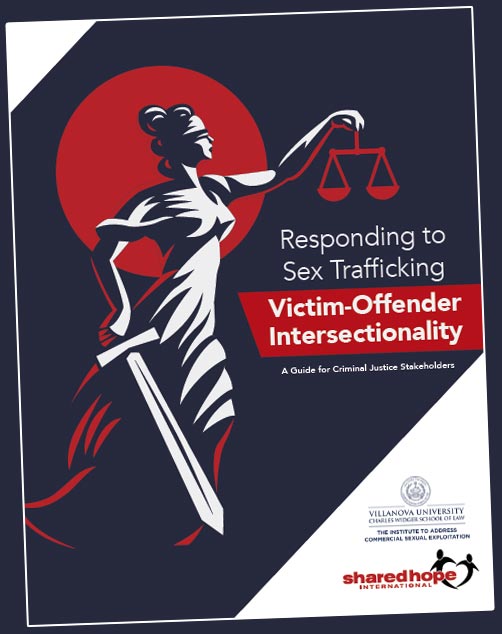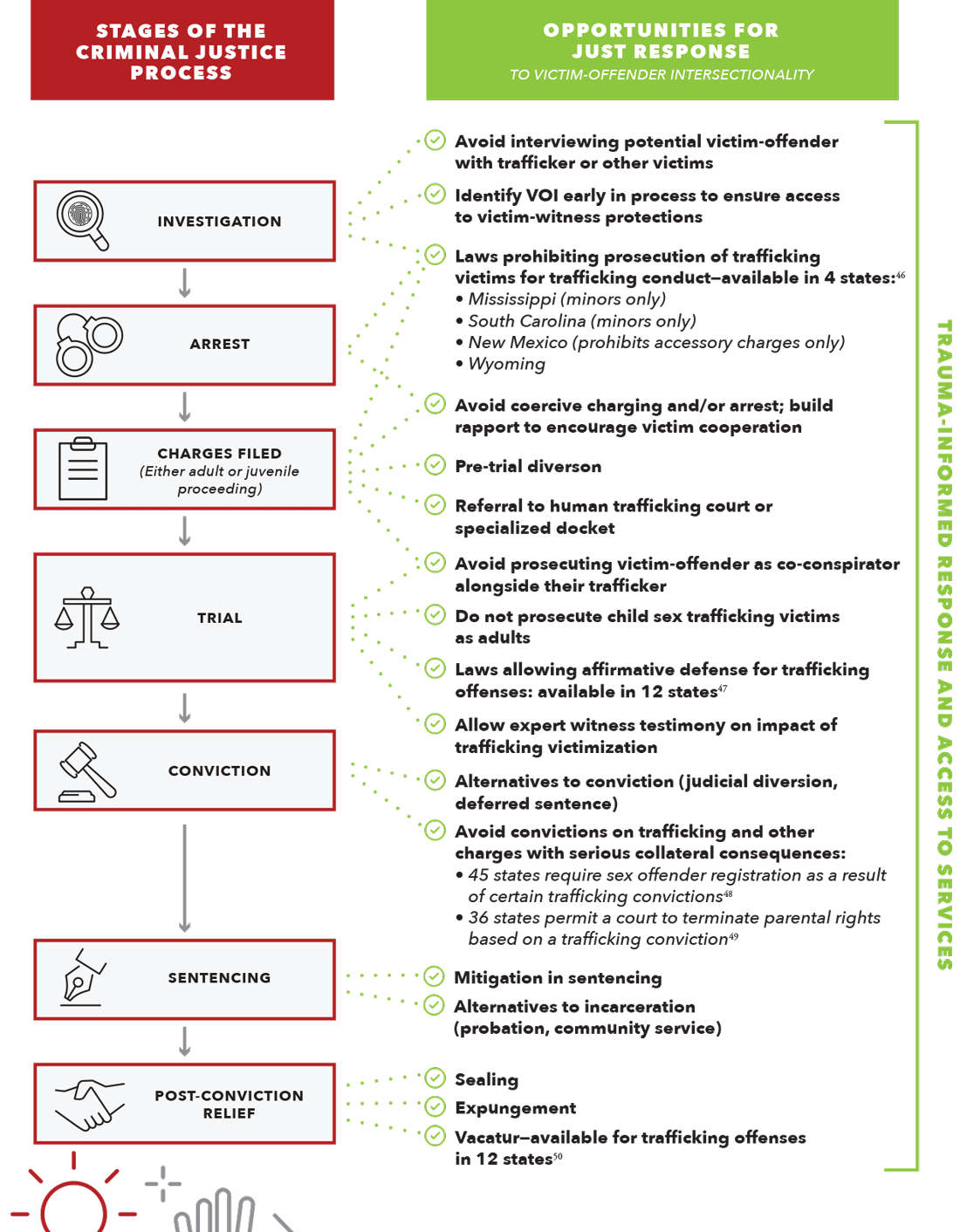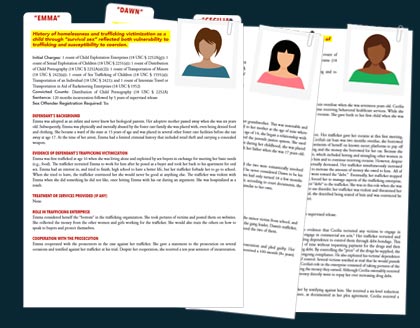
RESPONDING TO SEX TRAFFICKING VICTIM-OFFENDER INTERSECTIONALITY: A Guide for Criminal Justice Stakeholders
This field guidance is a joint report by Shared Hope International and the Institute to Address Commercial Sexual Exploitation at Villanova Law, and was informed by Shared Hope’s JuST Response Council. It follows three years of collaborative research on sex trafficking victim-offender intersectionality—the phenomenon of sex trafficking survivors who are alleged to have engaged in sex trafficking conduct.
The field guidance provides tools for criminal justice stakeholders that assist in identifying the intersection of trafficking victimization and offending conduct, as well as guidance on responding to these cases in a trauma-responsive and trafficking-informed manner. By examining victim-offender intersectionality through a trafficking-informed lens, this field guidance seeks to identify strategies for moving toward more just and fair responses to sex trafficking victim-offenders at all stages of the criminal justice process.

Statistics are based on legislation enacted as of January 1, 2020. For more current statistics related to unjust criminalization, visit reportcards.sharedhope.org/related-resources (Policy goals 2.5, 2.6, 2.7, 2.8, and 4.3).
This tool is meant to be a practical resource for anyone interacting with a sex trafficking victim-offender who intersects with, or is proceeding through, the criminal justice system. It is designed to help criminal justice stakeholders identify the multitude of factors that commonly arise in ST-VOI cases and provide guidance on how these factors can be appropriately taken into consideration as these cases proceed through the criminal justice system.
Next Steps Recommendations
One of the primary goals of this field guidance is to bring attention to ST-VOI and start a dialogue about how this challenging issue can be addressed in a way that balances potentially competing priorities of victim-centered justice, victims’ rights and public safety concerns. The JuST Response Council also recognizes that this field guidance will not address every circumstance of ST-VOI. More research and learning are needed to identify comprehensive solutions, both in policy and practice, for responding in a fair and just way to ST-VOI. To encourage that ongoing process, this report recommends the following next steps for the field:
Provide broad-based training for criminal justice stakeholders on identifying and responding to ST-VOI.
Consider impact of, and potential alternatives to, coercive tactics to gain victim cooperation and testimony. Research can help identify strategies for improving trafficking investigations and prosecutions that reduce or eliminate reliance on victim-witness testimony.
Ensure that there is a strong service-based component embedded within the criminal justice response to sex trafficking. Strong partnerships with service providers can help break the cycle of exploitation and address the vulnerabilities of trafficking victims before they potentially lead to later offending.
Conduct in-depth research on treatment approaches for sex trafficking victim-offenders, including how to provide specialized trauma-informed services to sex trafficking victim-offenders without risk to non-offending victims.
Conduct further research on what causes ST-VOI, how ST-VOI impacts a victim-offender, how those harmed by sex trafficking victim-offenders are impacted, and what resilience and protective factors could help prevent ST-VOI and coercion to commit other offenses.
Engage in an ongoing dialogue with a diverse range of stakeholders on how to balance competing priorities of victim-centered justice, victims’ rights and public safety concerns.
Seek and incorporate survivor engagement in development of responses, protocols, research strategies, and any next steps toward understanding and improving responses to ST-VOI.
Explore legal and practical alternatives to implementing a traditional criminal justice response in ST-VOI
cases, including opportunities to prevent criminalization at the outset of the case.Open avenues for sex trafficking victim-offenders who have been convicted of crimes related to their trafficking victimization to seek relief from the long-term consequences of those convictions.

The JuST Response Council is a group of 30+ experts from around the country who collaborate to improve responses to juvenile sex trafficking victims, drawing on the group's combined research, knowledge, and expertise in services, law, and policy. Members include policy advocates, government officials, medical professionals, law enforcement, judges, academics, and service providers, many of whom are themselves survivors of juvenile sex trafficking. We are deeply grateful to all Council members for ensuring this report reflects diverse perspectives and experiences.







